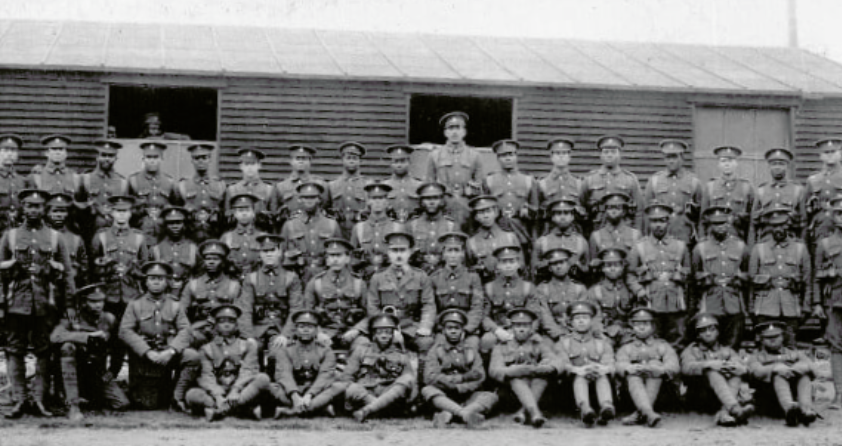Remembering the Great War Church Huts of Seaford Camp
- Home
- Latest News
- 2024
- June 2024
- Remembering the Great War Church Huts of Seaford Camp
From September 1914 to the end of the Great War and beyond Seaford hosted two large training camps (North Camp and South Camp). Recruits to Kitchener's Army in the first year were put up first in tents (until they suffered a deluge from a south-westerly gale), and then in huts which began to appear in late 1914 and early 1915. (By the way, when the tents went down many soldiers were then billeted in homes and other buildings in Eastbourne).
 The huts, constructed to a common plan and materials, served many purposes: accommodation, eating and recreation halls, lecture rooms and washhouses, while two were put up as the camp church.
The huts, constructed to a common plan and materials, served many purposes: accommodation, eating and recreation halls, lecture rooms and washhouses, while two were put up as the camp church.
After the war, in 1919 the church huts were sold and the following year they were taken down and taken by wagon to a site next to Lewes Station and re-erected. The sites of North Camp and South Camp were quickly developed as housing.
The 'Lewes Green Huts', something of a local landmark between the Lewes Railway Station and Grange Gardens, has been at this location and in constant use ever since, first as part of the cattle market and then, for many more decades, as the Gorringe's auction rooms.

This story and the provenance of the huts have been verified by Historic England and historians from Seaford Museum and Heritage Museum using existing records held in the Keep, Brighton. It is further supported by newspaper reports of the sale of the Church Huts and their removal to Lewes in what was then the Sussex Agricultural Express. The story recently featured on the front page of what is now the 'Sussex Express'.

Soldiers from East Lancashire and South Wales, then Canadian Foresters and soldiers from the British West Indies were based at Seaford Camp and would have used the Church Huts.

Those who died while based at Seaford were buried in Seaford Cemetery.

The story of the first recruits trained is told in ‘The Friendly Invasion of Lewes’ when 10,000 men descended on Sussex in early September 1914 and were billeted on the residents of Lewes for two weeks while the camp was built in the autumn of 1914. The stories of Canadian Foresters and men of the British West Indies are told in articles and book reviews on the website and in our historic magazine collection and Stand To! (use the Searchable Magazine Archive).
The Gorringe's site has been sold and the huts will be taken down in a few weeks.

Lewes District Council is hosting an event in the main hut this Saturday 6th July to say a fond farewell, celebrating the history of the huts, including their original use in the First World War. The huts will then be carefully dismantled and temporarily stored.
Funding from the District Council and a modest Crowdfunder will then be used to help find a new home and to assist with transport and re-erection.
Visit Lewes tells the story of the Two World War I Camps with original photographs provided by the Seaford Museum and Heritage Society.





